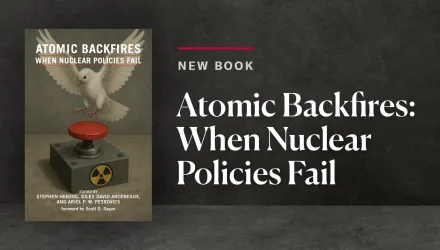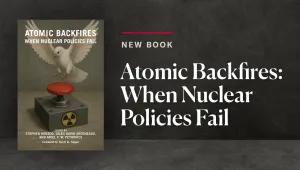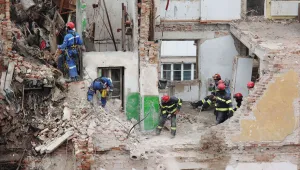A new YouTube video, released ahead of a government planning meeting for the 2016 Nuclear Security Summit, charges that stronger nuclear security can be as simple as five words. These five words are the 5 Priorities, a concept born in 2014 when a diverse group of nuclear security experts identified the most impactful policy changes that could advance global nuclear security. After rallying supporters and polishing their ideas, the 5 Priorities effort was launched to garner the attention of world leaders and help the broader public understand how the decisions made at the 2016 summit will impact them.
Nuclear security has never been an issue to ignite heated kitchen table debates at Thanksgiving, but the 5 Priorities for Global Nuclear Security campaign aims to make more people understand why they should care how the issue is being handled. The 5 Priorities are objective; they are not ideologically aligned as either “pro” or “anti” nuclear. Instead, they focus on the practical reality that as long as radioactive materials and technologies exist, they should be as safe and secure as possible.
5 Priorities supporters want the public to understand that radioactive materials are not only sequestered away in secluded military complexes or in remote locations in the snow drifts of Siberia. They are used every day, all around the world in medicine, research, and energy production. Nuclear power plants in 30 countries provide more than 10 percent of the world’s electricity production, and more than 60 new reactors are currently under construction in 15 countries. The majority of nuclear materials resides nuclear weapons programs, but the civil sector has accumulated stockpiles of separated plutonium that exceed 230 metric tons and more than 60 metric tons of highly-enriched uranium (HEU). That is enough material to make thousands of nuclear weapons. Ensuring that these materials remain secure is critical for the normal functioning of daily life.
Since the Nuclear Security Summits began in 2010, states have made significant progress locking down nuclear materials, updating national laws, and expanding education opportunities. More than 1,500 kilograms of HEU and plutonium has been sent back to its country of origin or eliminated, and 15 new countries became HEU-free. At least a dozen countries have established centers of excellence for nuclear security, and all states – to varying degrees— are participating in International Atomic Energy Agency nuclear security workshops and training initiatives. These actions are important, but little has been done to address the underlying structural problems of the international system. Acknowledgement of this does not discount the work that has been done, but rather it points to where future efforts should be directed.
The 5 Priorities campaign calls on world leaders to be more aggressive in their efforts to improve global nuclear security. After three heads-of-state summits involving more than 50 countries, serious gaps in the international governance framework remain. The current global nuclear security regime lacks enforceable standards and offers limited opportunities for information sharing and peer review. The absence of these basic characteristics allows uneven protections and vulnerabilities to persist.
The 5 Priorities for Global Nuclear Security provides a blueprint for what’s next. It represents the consensus of dozens of nuclear policy experts from more than 20 countries about how the global nuclear security system must evolve.
First, the system needs to be made more comprehensive. States should commit to fully implementing all elements of the existing system and demonstrating that effective security is in place for all civil and military materials. Second, it needs to be made more open. This will require identifying and exchanging non-sensitive data and regularly accepting peer reviews. Third, the system should become more rigorous. Measurable standards and best practices should be implemented wherever materials are located. Fourth, it needs to be sustainable. There must be mechanisms to allow the global regime to grow, adapt, and integrate the contributions of all stakeholder communities. Finally, global nuclear material stockpiles must be reduced. Leaders should endorse a time-bound roadmap for eliminating the civil use of HEU and propose actions to better balance plutonium supply and demand.
As the last summit of the biennial series, participants in the 2016 Nuclear Security Summit have a special responsibility to craft its outcomes with an eye to the future. The legacy of the summit process must be forward looking and build on past successes and innovations. The 5 Priorities offer useful guideposts for how to move toward a more consistent, global approach to governing the nuclear security system that prioritizes protecting people and the environment from the misuse of radiation.
Cann, Michelle. “Nuclear Security in Five Words.” November 2, 2015



